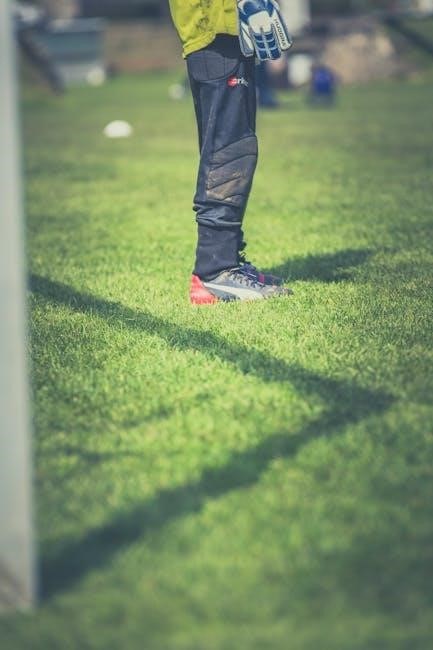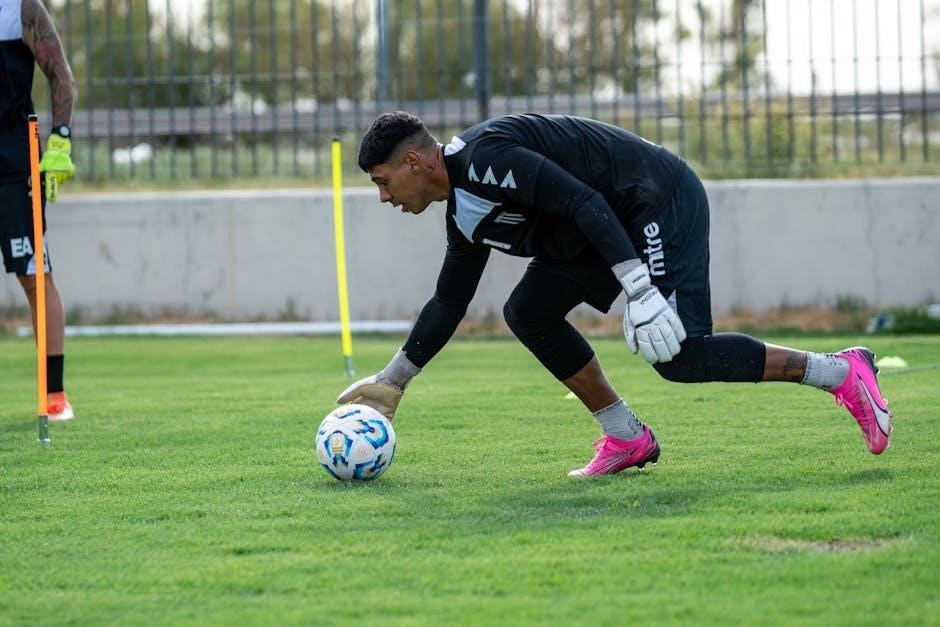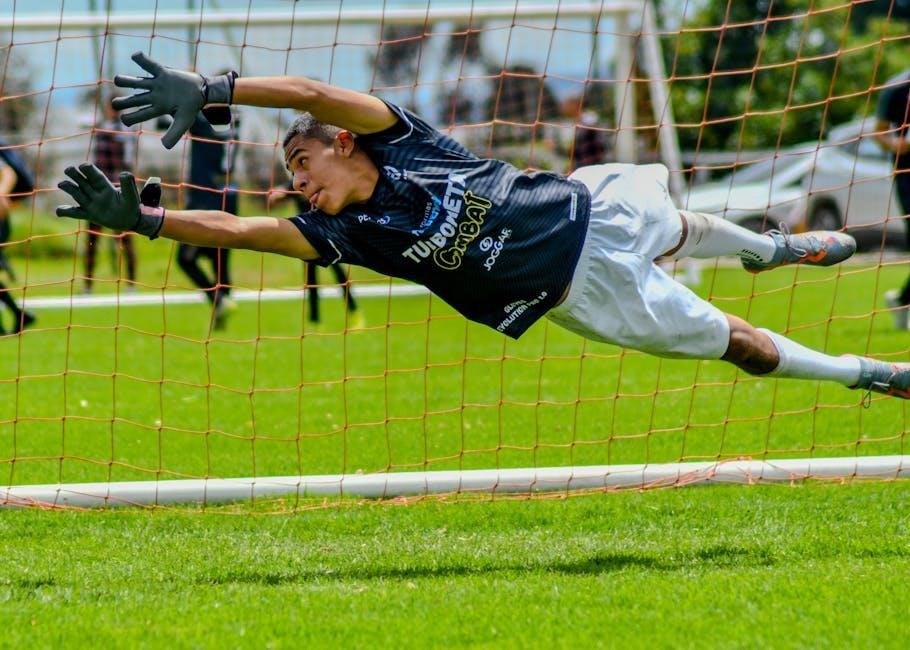The Pokemon Pocket Guide offers essential information for every trainer, from basics to pro tips, ensuring success in games, trades, and building powerful teams. Master the Pokemon universe with confidence and expertise, whether you’re a newcomer or a seasoned player. This guide provides valuable insights, strategies, and resources to enhance your journey.
Understanding the Basics of Pokemon
Understanding the basics of Pokemon is crucial for any trainer. Pokemon are creatures with unique abilities and types, such as Fire, Water, and Grass, which determine their strengths and weaknesses. Each Pokemon has stats like HP, Attack, and Speed, influencing its performance in battles. Evolution allows Pokemon to grow stronger, often unlocking new abilities. The core objective is to catch, train, and battle Pokemon to become a champion. Grasping these fundamentals helps build a solid foundation for more advanced strategies, whether in video games, the Trading Card Game, or competitive play. Mastering these basics is the first step to excelling in the Pokemon universe.

The Evolution of Pokemon Games
Pokemon games have evolved from simple, charming designs to immersive, feature-rich experiences. Each generation introduces new mechanics, regions, and Pokemon, enhancing gameplay and appeal for both newcomers and veterans. Journey through the evolution of Pokemon games, from the classic Game Boy to modern, innovative titles, offering endless adventure and engaging experiences for all trainers.
How Pokemon Games Have Changed Over the Years
Pokemon games have undergone significant transformations since their debut. Early titles like Pokemon Red and Blue introduced the core concept of catching and training Pokemon, while later games added new mechanics like breeding and abilities. The transition from 2D to 3D graphics in games like Pokemon X and Y revolutionized visuals and gameplay. Online features, such as trading and battling, became standard, enhancing connectivity. Recent titles like Pokemon Legends: Arceus and Pokemon Scarlet and Violet introduced open-world exploration and real-time catching, modernizing the series. These changes reflect the evolution of technology and player preferences, ensuring the franchise remains fresh and engaging for new and veteran trainers alike.
- New regions and storylines have been introduced in each generation.
- Improved graphics and gameplay mechanics enhance the player experience.
- Online features and community tools have expanded connectivity.
- Innovative concepts like open-world exploration redefine traditional gameplay.
These advancements have solidified Pokemon games as a beloved and evolving part of gaming culture.

Pokemon Trading Card Game (TCG) Guide
Master the Pokemon TCG with expert strategies for building competitive decks, understanding card values, and leveraging rare cards. Essential tips for beginners and pros alike.
Learn how to optimize your collection and stay ahead in trades and battles with proven techniques and valuable resources.
Mastering the Art of Building a Competitive Deck
Mastering the art of building a competitive deck requires a deep understanding of card synergies, type matchups, and meta trends. Start by focusing on a core strategy, whether it’s aggressive, defensive, or combo-based. Ensure your deck includes a balanced mix of Pokémon, energy, and trainer cards. Pay attention to card rarity and condition, as high-quality cards can significantly impact performance. Stay updated on the latest expansions and bans to maintain relevance. Practice regularly and adapt your deck based on tournament results and community feedback. Resources like deck lists and strategy guides can provide valuable insights to refine your approach and stay ahead in competitions.

Pokemon Team Building Tips
Build a balanced team by considering type matchups, move diversity, and strategic roles. Ensure each Pokémon complements others, covering weaknesses and amplifying strengths. Master team synergy for victory.
Strategies for Creating a Balanced and Powerful Team
Creating a balanced and powerful Pokémon team requires careful planning and strategy. Start by selecting Pokémon with diverse types to cover weaknesses and exploit opponents’ vulnerabilities. Ensure a mix of physical and special attackers, as well as support Pokémon like Chansey or Toxapex to maintain team health. Consider movesets that complement each other, such as pairing a sweeper like Lucario with a wall like Blissey. Coverage moves, like Earthquake or Flamethrower, are essential for handling common types. Additionally, include Pokémon with utility moves like Taunt or Will-O-Wisp to disrupt opponents. Synergy is key—each Pokémon should enhance the team’s overall performance, ensuring a well-rounded and formidable lineup.
Pokemon Etiquette and Community
Respect and fairness are key in the Pokémon community. Always be sportsmanlike in trades and battles, ensuring a positive experience for everyone. Shared knowledge and camaraderie strengthen bonds among trainers, fostering a supportive environment for all. Proper behavior in interactions, whether online or in person, is essential for maintaining a thriving community.
Proper Behavior in Trades, Battles, and Online Interactions
Respecting opponents and fellow trainers is crucial for a positive Pokémon community. Always maintain sportsmanship during battles, avoiding trash talk or disrespectful comments. In trades, ensure honesty about the condition and legitimacy of Pokémon or cards. Agree on terms clearly and fulfill commitments. Online interactions should remain polite and constructive, fostering a supportive environment. Avoid scams or misleading offers, and keep records of trade agreements; By upholding these standards, you contribute to a fair and enjoyable experience for everyone. Remember, respect and fairness are the foundation of meaningful interactions in the Pokémon world.

Identifying Fake or Hacked Pokemon
Learn to spot fake or hacked Pokémon by checking for unusual stats, inconsistent moves, or altered appearances. Use tools like legitimacy checkers to verify authenticity and avoid scams.
How to Determine If a Pokemon Is Legitimate
To verify a Pokémon’s legitimacy, check its stats, moves, and appearance against official data. Ensure it wasn’t obtained through hacks or illegal modifications. Examine event-exclusive Pokémon for proper distribution identifiers. Use tools like PKHex or Legitility Checker to analyze data. Cross-reference with official sources to confirm legitimacy. If unsure, consult trusted community resources or experts. Always trade cautiously and avoid using hacked Pokémon to prevent bans. Legitimate Pokémon adhere strictly to game mechanics and official distributions, ensuring fair play and a enjoyable experience for all trainers.
Using a Pokemon Guide for Success
A reliable Pokémon guide enhances gameplay by providing strategies, resources, and expert tips. It helps optimize team building, master mechanics, and make informed decisions, ensuring both efficiency and enjoyment.
How Guides Can Improve Your Gameplay and Collection
Pokemon guides provide valuable strategies to enhance gameplay, from optimizing team builds to mastering battle mechanics. They offer insights into resource allocation and stats optimization, helping players make informed decisions. For collectors, guides reveal rare card identification and legitimacy checks, ensuring authenticity. They also cover trading etiquette and competitive deck-building tips, fostering a stronger connection with the Pokémon community. By leveraging these resources, players can elevate their skills, expand their collections, and enjoy a more rewarding experience in the Pokémon universe.

Pokemon Pocket Guide Resources
Discover essential tools and information through official Pokemon websites, community forums, and trusted guides. These resources offer valuable insights for both new and experienced trainers.
Where to Find the Best Tools and Information
To enhance your Pokemon journey, explore official Pokemon websites, forums, and trusted guides. Online databases like Serebii and Bulbapedia provide detailed information on Pokemon stats, moves, and evolutions. Additionally, community platforms such as Reddit and Discord offer valuable discussions, strategies, and resources. For team building, tools like the Pokemon Team Planner and Damage Calculator are indispensable. Mobile apps like Pokemon HOME and Pokemon TCG Online help manage collections and decks. Don’t forget to check out YouTube tutorials and Twitter updates for the latest news and tips. These resources ensure you stay informed and competitive in both games and trades.
Mastering the Pokemon universe requires dedication and the right resources. With the Pokemon Pocket Guide, you’ll be equipped to enhance your gameplay, collection, and community interactions. Start your adventure today!
Final Thoughts on Mastering the Pokemon Universe
Mastering the Pokemon universe is a journey that combines skill, strategy, and community. Whether you’re building a competitive deck, forming a powerful team, or engaging in trades, the Pokemon Pocket Guide equips you with essential insights. From understanding the basics to advanced techniques, this guide ensures you’re prepared for every challenge. Remember, the Pokemon community thrives on respect and sportsmanship. Embrace continuous learning, stay adaptable, and enjoy the adventure. With dedication and the right resources, you’ll excel in games, trades, and beyond. Start your journey to becoming a true Pokemon master today!




























